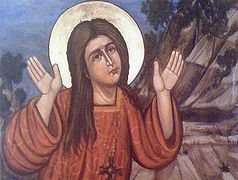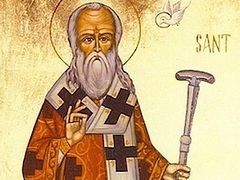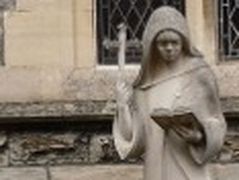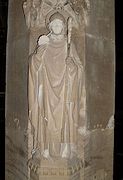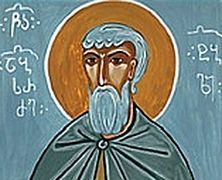Source: Catholic Herald
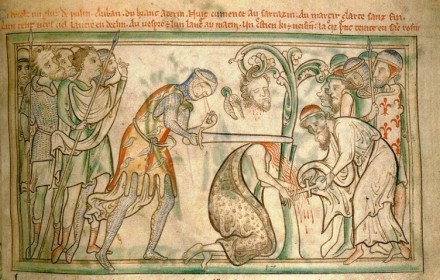 A 13th-century manuscript at Trinity College Library, Dublin, shows the executioner’s eyes falling out as he kills the saint
A 13th-century manuscript at Trinity College Library, Dublin, shows the executioner’s eyes falling out as he kills the saint St Alban is venerated as the first English martyr. He was a Romano-British pagan living in the city of Verulamium sometime during the third or fourth century. During a purge of Christians, Alban shielded a Christian priest, traditionally known Amphibalus, in his home as he fled from Roman soldiers. Alban was so impressed by the priest’s piety that he converted to Christianity.
When the Romans realised Amphibalus’ whereabouts they came to seize him. But Alban, disguising himself in the cloak of Amphibalus, offered himself to the soldier. He was then taken to the pagan temple at Verulamium and presented to the judge. The judge was furious when he discovered that Alban had taken Amphibalus’s place and demanded that Alban renounce Christianity and offer sacrifices to the gods. It was then that Alban spoke the words quoted in the prayer still used at St Albans Abbey: “I worship and adore the true and living God who created all things.” Alban was then scourged and sentenced to death.
On his way to his execution Alban had to cross the River Ver, but it was clogged with a mob of townspeople who wanted to watch the execution. Alban is said to have prayed for a quick death and the river subsequently dried up, allowing Alban and his captors to cross on dry land. When Alban’s executioner witnessed this he fell to his feet and prayed that he would suffer with Alban or be executed. Both the soldier and Alban were beheaded, but as Alban’s head fell to the ground so did the eyes of the second executioner, who killed Alban. The judge who witnessed these events was so moved that he ended the persecution of Christians and began to honour the saints. The place of St Alban’s death is where St Albans Cathedral now stands.
The site of Alban’s martyrdom soon grew popular. In 429, Bishop Germanus of Auxerre visited and reportedly took away relics of the earth which was still bloodied.
St Alban is venerated by Anglicans, Catholics and Orthodox Christians. Every year, on the weekend which falls closest to the time of Alban’s martyrdom, St Albans Cathedral hosts the Alban Pilgrimage, with huge puppets re-enacting the events of his heroic death.

